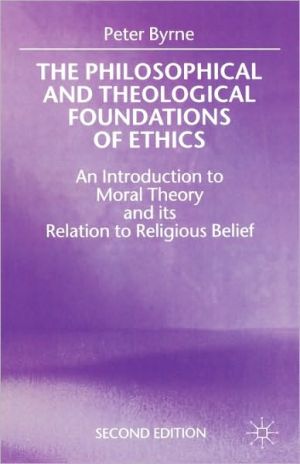

 |

|

The average rating for The Philosophical And Theological Foundations Of Ethics based on 2 reviews is 3.5 stars.
Review # 1 was written on 2013-04-04 00:00:00 Geoff Minor Geoff MinorBrilliant look at the idea and the development of magic through anthropological study. I LOVE THIS BOOK. From Amazon: This book examines how and why practitioners of nature religion--Western witches, druids, shamans--seek to relate spiritually with nature through "magical consciousness". Greenwood develops a new theory of magical consciousness by arguing that magic ultimately has more to do with the workings of the human mind in terms of an expanded awareness than with socio-cultural explanations. She combines her own subjective insights gained from magical practice with practitioners' in-depth accounts and sustained academic theory on the process of magic. She also tracks magical consciousness in philosophy, myth, folklore and story-telling, and the hi-tech discourse of postmodernity. |
Review # 2 was written on 2016-03-04 00:00:00 Harlan Frolich Harlan FrolichZoroastrians by Mary Boyce is an exemplary mixture of riveting writing style and thoroughly-researched, unbiased religion study. Any reader, none the less, should prepare themselves to dive into an ancient vernacular with words possibly unfamiliar to a general reader of Western civilization. Boyce prefers the words' original forms, which she explains once per each form used, over descriptive English equivalents. Careful reading, however, will most likely suffice to grasp the book's content. The Author begins her narrative with describing ancient roots of Zoroastrianism, a religious system that dates back to the second millenium BCE, which, in turn, makes it the oldest monotheistic religion. She places it in its historical, geographical and 'proto-theological' context; what follows, by and large, is a well-researched account of how a set of beliefs - not wholly unknown to polytheistic tradition - evolved into a religion that challenged other religions. Next, Boyce proceeds to explaining Zoroastrianism's ritualistic, cosmogonical and, in general, theological background. In my humble opinion, this is the most interesting part of the book, which covers Zoroastrian dualist take on the Universe and, by extrapolation, human nature. She also expertly describes what ideas were later implemented into other world religious systems, such as Mahayana Buddhism, Judaism, Christianity and Islam. Among many others, concepts of a savior, Heaven and Hell, or knowledge through revelation were all borrowed from Zoroastrianism. Quite difficult theological deliberations of how seemingly contradictory frameworks of co-existence of several divine entities can be reconciled with monotheistic premises, Boyce delivers perfectly. The book is also a detailed study of change in perception of Zoroastrianism under three main consecutive Persian dynasties of the Achaemenians, Seleucids and Sassanians that, taken as a whole, ruled for over 1,000 years. This part is most valuable for anyone interested in the history of development of Zoroastrian religion, as it shows a way of adapting existing rituals and theological concepts into the official religion, as well as introducing new ones, such as the establishment of veneration of sacred places and erecting official places of worship. Zoroastrianism is also shown through a lense of idiosyncratic blending of other religious traditions, be they Greek or Egyptian. One of the more important themes of this part of a book is a description concerning the foundation of Zoroastrian ecclesiastical organization. What is really interesting is that Zoroastrianism stood out as the then-only monotheistic religion that seems to have been tolerant of other faiths. In this respect, it was very different from other monotheistic systems, e.g. Judaism and Christianity. Even more interesting is the fact that it didn't proselytize against non-religious people (even highly tolerant Ancient Romans didn't go that far). Last but not least, the book shows Zoroastrian religion, its practitioners, hierarchy and dedication to tradition under alien rulers and their religions; Boyce draws an entertaining picture of its history from the early Caliphate in 7th CE to modern-day Iran, India and Tajikistan. It seems that despite being ostensibly persecuted in the past, Zoroastrians managed to preserve the crux of their orthodoxy, religious practices and tradition. From modern vantage point, it can be argued that Zoroastrianism is a religion of relatively minor importance, especially compared to the Mosaic religions or Buddhism. However, it's significant to realize its influence over the said religious systems. What looks like an original component of this or that religion, may, in fact, be a borrowing from Zoroastrian theology and religious practice. |
CAN'T FIND WHAT YOU'RE LOOKING FOR? CLICK HERE!!!